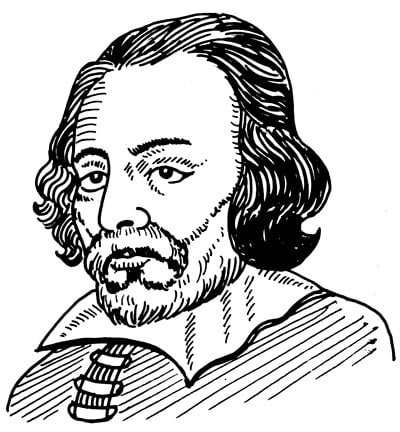
William Harvey undertook groundbreaking research into the circulation of the blood and the function of the heart—research that was funded by royal patron King James I. Harvey dispelled the contemporary belief that blood was propelled through the body by a pulsing action in the arteries; instead, he argued, the heart was at the centre of the circulatory system.
Born in Kent, Harvey was the oldest of seven siblings, and benefitted from a good education; after studying at King’s College, Canterbury, he gained a BA at Cambridge University. Then followed an interlude at the University of Padua in Italy, where the scientist and surgeon Hieronymus Fabricius tutored him; he returned to England in 1602.
Fabricius, who was fascinated by anatomy, recognised that the veins in the human body had one-way valves, but was puzzled as to their function. It was Harvey who took the foundation of Fabricius’s teaching, and went on to solve the riddle of what part the valves played in the circulation of blood through the body.
On his return from Italy Harvey gained an MD at Cambridge, before establishing himself as a physician. His career was assisted by marriage (1602) to Elizabeth Browne, daughter of a physician to the ageing queen Elizabeth I. Harvey was appointed fellow of the Royal College of Physicians, and became physician to James I in 1618, and then to Charles I when the latter was made king.
Harvey’s research was furthered through the dissection of animals. He first revealed his findings—in the role of Lumleian lecturer—at the College of Physicians in 1616, and in 1628 he published his theories in a book entitled An Anatomical Study of the Motion of the Heart and of the Blood in Animals where he explained how the heart propelled the blood in a circular course through the body. His discovery was received with great interest and accepted in England at once, although it was greeted with some scepticism.
Not satisfied with this ground-breaking discovery, Harvey was also the first to suggest that humans and other mammals reproduced via the fertilisation of an egg by sperm. It took a further two centuries before a mammalian egg was finally observed, but nonetheless Harvey’s theory won credibility during his lifetime.
He retained a close working relationship with the royal family until the end of the Civil War, and witnessed the Battle of Edgehill. By mandate of Charles I he was for a short time Warden of Merton College, Oxford (1645-6), and, when he was too infirm to undertake the duties, he was offered the Presidency of the College of Physicians. He died in June 1657.

